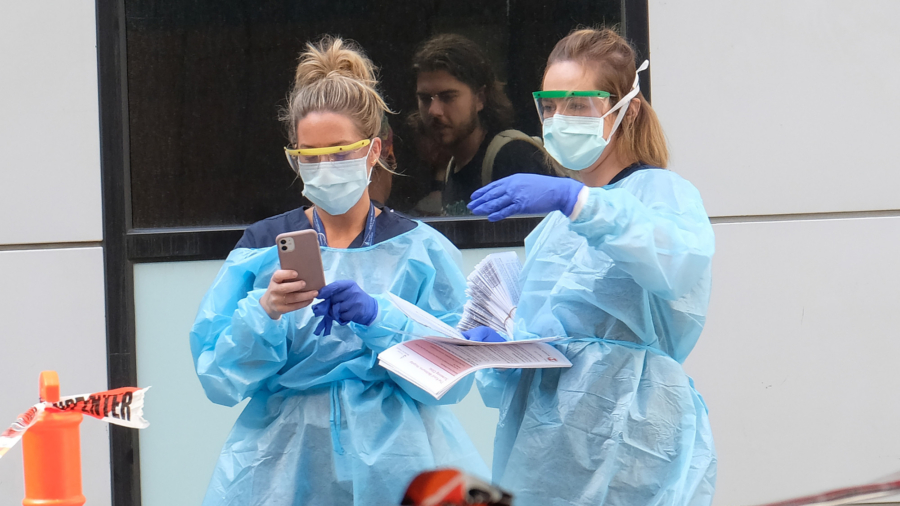If mitigation works, some five per cent of the NSW population could be symptomatic in November with 5,100 patients in intensive care, a COVID-19 model suggests.
Increased social isolation to combat COVID-19 in NSW could shift the peak period of infection to early October with intensive care units at their busiest in mid-November, expert modelling suggests.
But even if restrictions on movement reduce the reproduction rate to 1.6—meaning each individual with the disease infects 1.6 others—the state’s ICU capacity could still be overwhelmed, an article published in the Medical Journal of Australia on Monday finds.
“Under the scenario of increased social isolation, the peak infection will shift to early October and peak ICU utilisation will shift to mid-November and would be around one-third the size of the business-as-usual peak,” the authors write.
At that point, some five per cent of the population could be symptomatic, with more than 14,000 people in hospital across NSW and 5,100 patients in intensive care.
“This represents 585 percent of the state’s baseline ICU capacity prior to the epidemic,” write the article’s authors from the University of Sydney, Monash University, and James Cook University.
The infectious diseases modellers note that prior to the current COVID-19 epidemic caused by the CCP virus there were 874 intensive care beds in NSW.
They argue that even with a doubling of existing services “the available supply is estimated to be substantially less than the peak requirement.”
Hospitals and ICU facilities “are likely to be overwhelmed unless transmission can be reduced significantly,” the authors suggest.
Without social distancing measures, peak transmission would be much earlier, in late-June, with peak hospitalisation in early July.
Sixteen per cent of the population could be symptomatic, with more than 35,000 people hospitalised and close to 11,800 UCI beds needed, the modelling suggests. That’s 1,349 percent of baseline capacity.
Advice remains to stay home when possible – if you must go out for essentials or healthcare please stay away from other people and wash your hands regularly. If you are sick you MUST NOT leave home for any reason. Call your doctor. https://t.co/O8401hxOqx pic.twitter.com/cLZw2d3peU
— Australian Government Department of Health (@healthgovau) March 30, 2020
The authors admit, however, that their “compartmental model” approach has several limitations.
It depends upon assumptions including the current reproduction rate which remains uncertain.
The authors acknowledge the trajectory of the epidemic will be highly dependent upon the effectiveness of mitigation strategies.
“The present report does not estimate the effect of more intensive suppression strategies which would be likely to reduce the peak ICU requirement,” they write.
NSW is enforcing new rules which limit gatherings to two people unless you are with immediate family.
Students are encouraged to stay home from school and employees are working from home wherever possible.
Those over 70 or with chronic illnesses are advised to stay home unless they require medical care.
By Julian Drape

